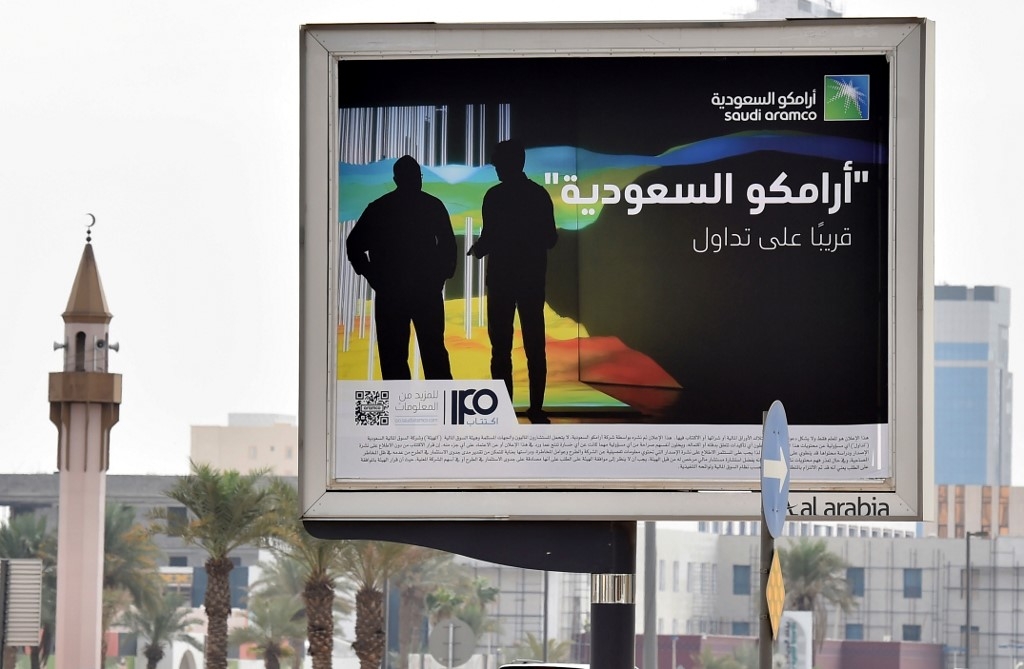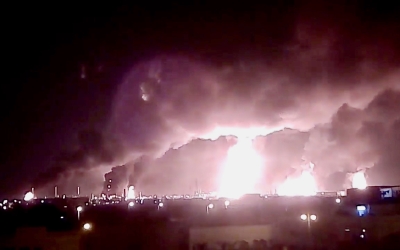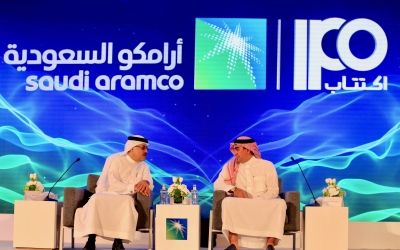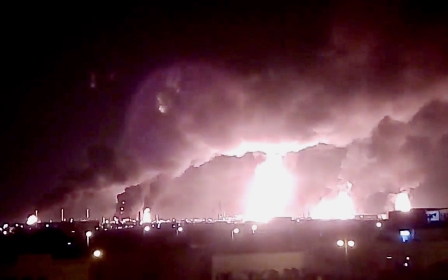Blow to Saudi crown prince as oil giant Aramco valued below target of $2 trillion

Saudi Aramco is worth up to $1.7 trillion according to the price range set by the oil giant on Sunday, below the $2 trillion targeted by Saudi Crown Prince Mohammed bin Salman, but is still vying for the title of the world's biggest initial public offering (IPO).
Aramco said it plans to sell 1.5 percent of the company, or about three billion shares, at an indicative price range of 30 riyals to 32 riyals, valuing the IPO at as much as 96 billion riyals ($25.6bn) and giving the company a potential market value of between $1.6 trillion and $1.7 trillion.
The IPO size could be bigger if they use a 15 percent over-allotment option, known as a "greenshoe" option.
This could just beat Chinese e-commerce giant Alibaba's record $25bn New York stock market debut in 2014.
Aramco will not be allowed to sell the shares directly to investors in the United States and other markets, as the deal will now be restricted to Saudis and foreign institutions who can invest in shares in the kingdom's stock market.
"We are planning to subscribe to the IPO in two funds that we manage," Zachary Cefaratti, chief executive officer of Dubai-based Dalma Capital Management, told the Reuters news agency, adding that the preliminary valuation was "in line with our expectations".
Aramco is yet to name any cornerstone investors in the deal or formally disclose the listing date.
The IPO comes as part of bin Salman's plans to diversify the country's economy and create the world's most valuable listed company.
Drone and missile attack
Aramco's net income for the third quarter of 2019 amounted to $21.1bn, according to calculations by Reuters, dwarfing the income for the same period of oil giants such as ExxonMobil, which was just over $3bn.
Bin Salman, who floated the idea for the IPO four years ago, is seeking to raise billions of dollars to invest in non-oil industries, create employment and diversify the world's top crude exporter away from oil.
The oil company finally kicked off its IPO on 3 November after a series of false starts.
Bin Salman's reputation was tarnished by the murder of Saudi journalist Jamal Khashoggi last year, while Aramco's oil plants were targeted in September by drone and missile attacks which initially halved its output.
It has said the strikes will not have a material impact on its business.
In its original prospectus, published on 9 November, Aramco said the domestic IPO would be made available to institutional investors outside the US according to Regulation S of the US Securities Act of 1933, and inside the US under the Rule 144A of the US Securities Act.
But on Sunday, in an addendum to the IPO prospectus, Aramco said that it had removed any reference to such regulations, which three people familiar with the matter said suggested there would not be any international roadshows to market the shares.
"It was not worth it from their view. If there's no substantial value or demand why do it and take additional legal risk?," a banker familiar with the matter told Reuters.
Political risk
Analysts from banks working on the Riyadh bourse had given a valuation range of $1.2 trillion to $2.3 trillion for Aramco's IPO and the fall from bin Salman's original target underscores the challenges facing the company.
"The Aramco IPO valuation of $1.7 trillion could provide room for upside for discerning investors," said Nirgunan Tiruchelvam, head of consumers equity research at Tellimer.
Aramco is the world's most profitable company with a planned dividend of $75bn next year, more than five times larger than the payout by Apple, the biggest of any S&P 500 company.
But it is a bet on the price of oil at a time when global demand is expected to slow from 2025 due to measures to cut greenhouse gas emissions and the rising use of electric vehicles.
There is also political risk as the Saudi government, which relies on Aramco for the bulk of its funding, will continue to control the company.
Saudi Arabia has huge oil reserves of more than 260 billion barrels.
The kingdom is one of the top producers and exporters of petroleum globally, and owns about 18 percent of the world’s proven petroleum reserves.
The oil and gas sector comprises half the country’s gross domestic product and 70 percent of its export earnings, according to CNBC.
Middle East Eye delivers independent and unrivalled coverage and analysis of the Middle East, North Africa and beyond. To learn more about republishing this content and the associated fees, please fill out this form. More about MEE can be found here.






